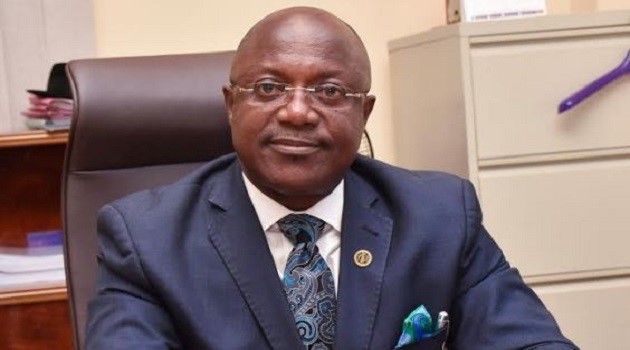Copyright Newsweek

Several former Immigration and Customs Enforcement (ICE) officials told Newsweek they are opposed to the Trump administration’s plan to install Border Patrol leaders in ICE field offices, warning the move could shift the agency from targeted interior enforcement toward a more forceful approach. The administration is planning to replace ICE field directors with Border Patrol and Customs and Border Protection (CBP) officials in multiple major cities in what several sources describe as an effort to ramp up deportations and toughen enforcement tactics. Traditionally focused on interior enforcement and deporting individuals with final orders of removal, ICE may now see its priorities and culture shift under leaders trained in border security tactics. Former ICE and Department of Homeland Security (DHS) staffers warn that the changes could ripple across detention practices, inter-agency coordination, and community relations, raising questions about the future of one of the nation’s most divisive law-enforcement agencies. An anonymous government official who requested anonymity to speak freely about internal agency workings said that under the new leadership, enforcement operations could become more aggressive. "That's the marching orders I'm sure these chiefs are going to get," the official told Newsweek. The Trump administration is piling pressure on federal agencies as it races to reach its lofty goal of deporting 1 million people in a year. At a May meeting with ICE officials, White House policy adviser Stephen Miller and Homeland Security Secretary Kristi Noem pressed agency leaders to increase arrests, reportedly asking immigration enforcers to target roughly 3,000 detentions per day. Senior White House aides have reportedly been disappointed with ICE and impressed by Border Patrol’s operations in Los Angeles and Chicago, including rappelling from helicopters and leaping from unmarked trucks during raids, and believe that same approach could reinvigorate ICE’s field offices. The reshuffle reaches offices from Los Angeles to Philadelphia, with Border Patrol and CBP officials slated to assume leadership roles in at least eight major cities, according to Fox News. Chief Patrol Agent of the El Centro Sector in Southern California Gregory Bovino laid the blueprint for how the changes might look with Operation Midway Blitz, which critics say relied on heavy‑handed tactics, including deploying chemical agents such as tear gas and pepper bullets. Bovino led Border Patrol agents into widely publicized immigration raids Los Angeles and Chicago. The government official cautioned that Border Patrol chiefs may struggle to adapt to ICE’s interior enforcement mission. "These chiefs have never run an office in the interior of the U.S. They don't understand how the politics of these things work. It's not like being at the border when you have people just running across the desert and you're making arrests, no one's in your way to stop you," the official told Newsweek. The official also noted that ICE has historically balanced enforcement with tact, conducting early-morning operations to minimize community disruption, a practice that may clash with the Border Patrol’s more direct style. Enforcement and Removal Operations (ERO), a subdivision of ICE, is responsible for identifying, arresting, and removing undocumented immigrants, particularly those with criminal convictions. Former ICE officials expressed concern that the Border Patrol’s operational style could undermine the agency's mission. "Border Patrol wants to be out there and wants to be f*****g running around. You don't see any ICE field office directors out there with their f*****g guys on daily operations. They [Border Patrol] love themselves," one former ICE official who requested anonymity to speak freely told Newsweek. "They don't know s*** about the immigration laws like ERO does." Claire McNulty, a former ICE and U.S. Citizenship and Immigration Services (USCIS) staffer, told Newsweek that she is concerned that more U.S. citizens could be detained under the plans. "You're just sweeping up everybody who possibly could be removed. You're definitely going to get more U.S. citizens and more mistakes," McNulty said, adding that the Border Patrol’s focus on securing the areas between ports of entry leads them to use a more sweeping approach, aiming to apprehend anyone who may have entered the country unlawfully. McNulty said that "the wider the net," the more people could be caught up in enforcement actions. She added that this could translate into a much broader “get-everybody” approach, rather than the more targeted enforcement style traditionally used by ICE. Katherine Hawkins, senior legal analyst at the Project on Government Oversight (POGO), told Newsweek, “If this shift does result in more arrests, there’s more opportunity for people’s due process rights to be violated." She added that CBP agents “have a long history of abusing their power with little to no consequences.” Last year, Newsweek revealed that 211 CBP officers are under investigation for alleged misconduct, including trafficking, bribery, and sexual assault. Hawkins warned that if DHS begins relying more heavily on Border Patrol agents and their aggressive tactics, arrests could rise sharply, leading to higher numbers of people in immigration detention. “Facilities for detaining immigrants across the country have notoriously poor conditions, and that could worsen with overcrowding and hastily constructed temporary solutions,” she said. “Even before this administration, it was hard for detained immigrants to get the proper legal representation they needed. And there have been several examples already this year of rushed arrests, leaving people struggling to contact family and legal representation. A higher number of arrests will only exacerbate the issue,” Hawkins added. While DHS is restructuring leadership, it is also reshaping its workforce, offering new incentives to expand its enforcement capacity The agency has been driving a recruitment campaign to promote a suite of financial incentives to attract recruits such as relocation and signing bonuses and student loan repayment or forgiveness options, with many reports citing signing bonuses of up to $50,000. Eligibility for specific incentives and retirement benefits depends on the legal designation and classification of each role, and the exact amounts available for loan repayment or other bonuses vary by program and posting. These incentives reflect an aggressive push to expand enforcement ranks amid the administration’s broader immigration priorities. “Unfortunately, much of DHS and ICE’s current recruiting efforts seem likely to encourage people who are motivated to public service for the wrong reasons and the lowering of hiring standards only increases the risk that some of these applicants may be brought on board,” John Sandweg, who was acting director of ICE under President Barack Obama, from August 2013 to February 2014, previously told Newsweek. In March 2025, DHS announced a sweeping reduction in force for three key oversight offices, the Office for Civil Rights and Civil Liberties (CRCL), the Office of the Immigration Detention Ombudsman, and the USCIS Ombudsman, signaling major cuts to internal accountability mechanisms. More than 100 employees were placed on administrative leave or faced layoff notices, and the offices’ future roles were described by critics as “effectively closed,” though DHS later indicated they would remain operational in a much more limited capacity. The move sparked sharp concern from advocates who warned the changes would erode the agency’s ability to monitor civil rights violations. “I think it's increasingly risky to have less kind of oversight or checks or balances on DHS, just with the like, amped up nature of the way they're operating,” McNulty said. Hawkins added: “This administration gutted several oversight offices that help hold the agency accountable, so it will certainly be a struggle to hold officials accountable for their abuses.” As leadership changes ripple through ICE, former officials and civil rights advocates say the results could be swift and far-reaching: more arrests, more crowded detention facilities, fewer internal checks, and a higher risk that U.S. citizens and legally present immigrants will be swept up in enforcement operations.



